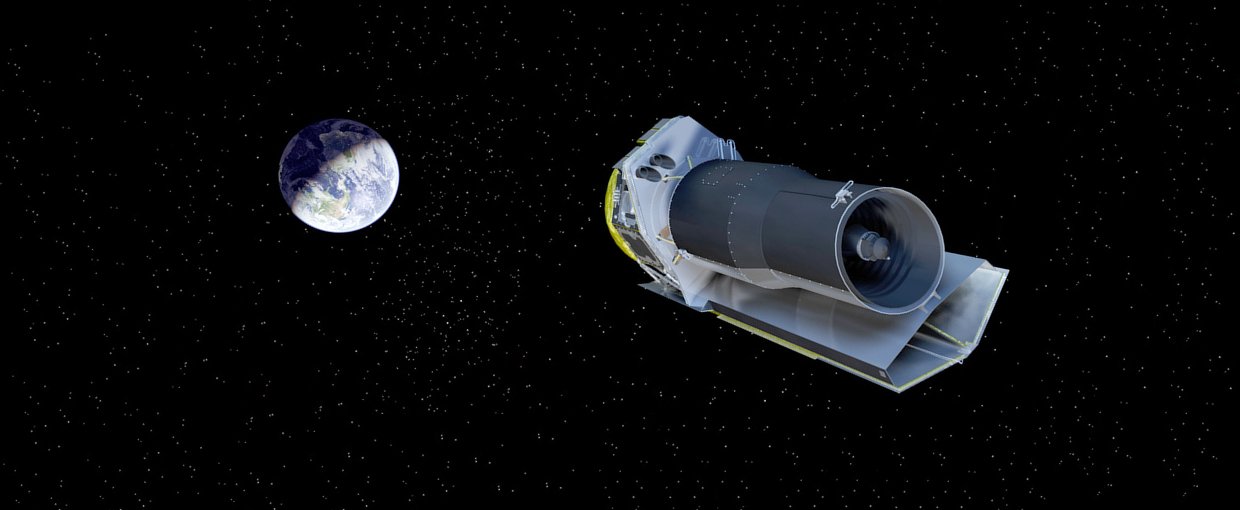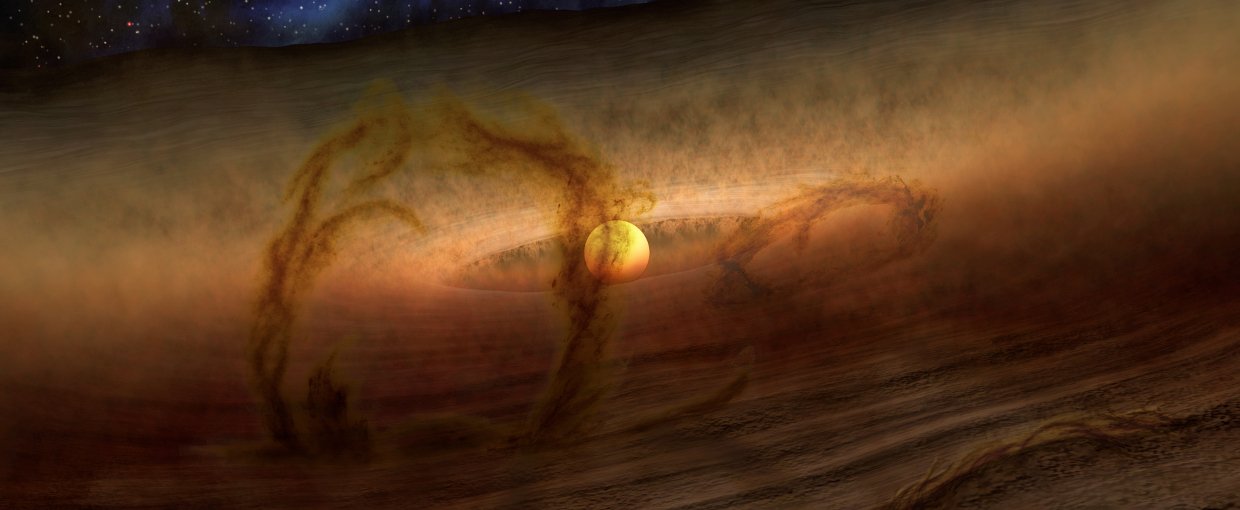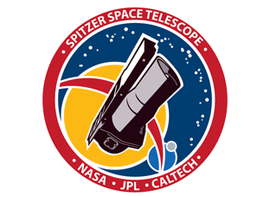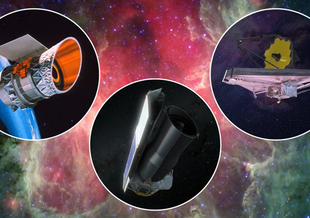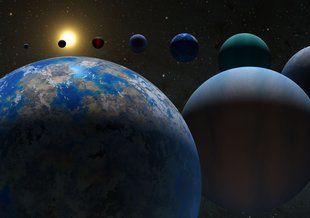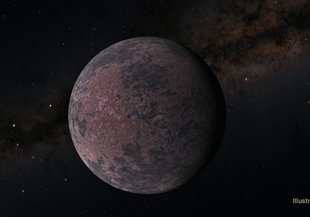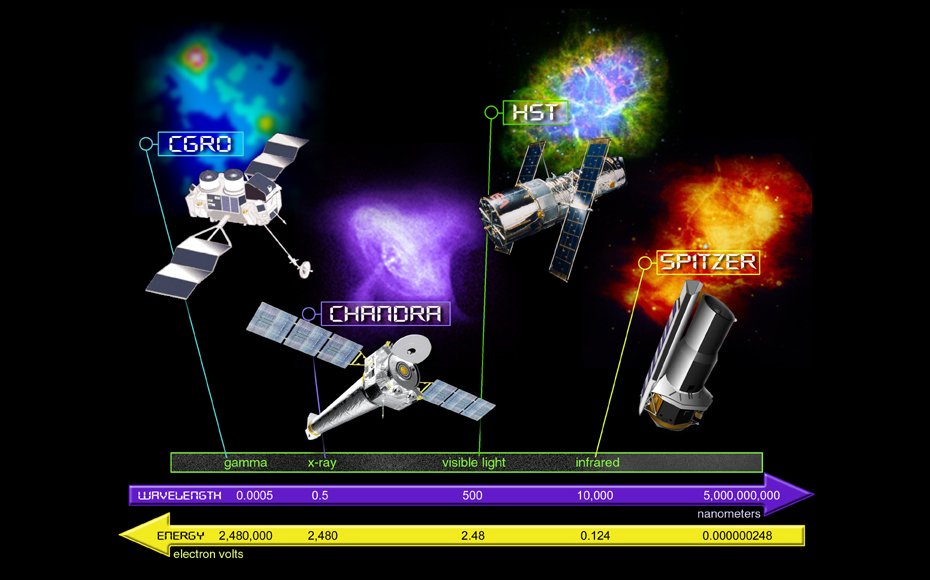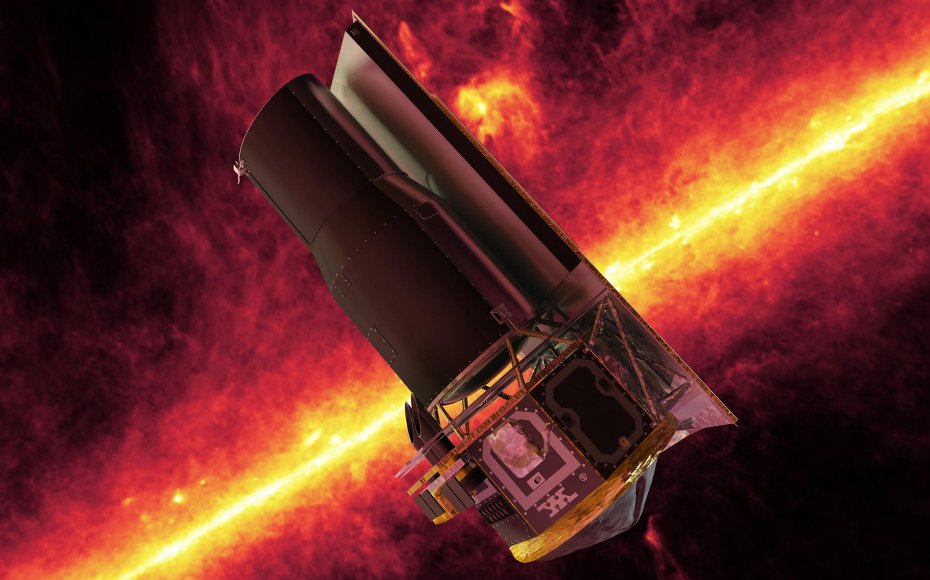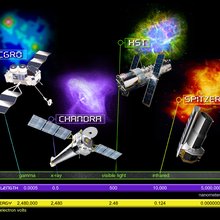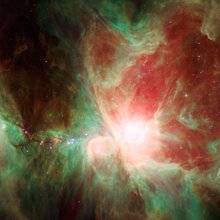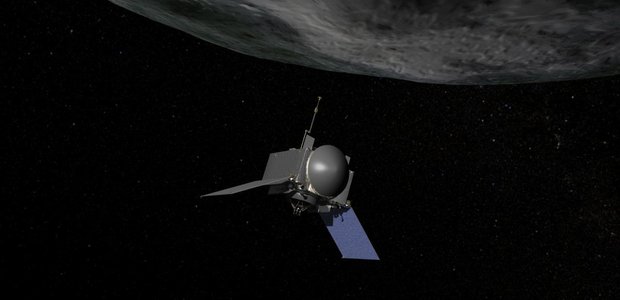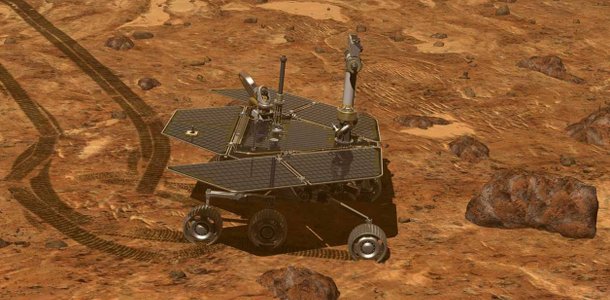- Launch Date August 24, 2003
- Mission TypeSpace Telescope
- TargetThe Milky Way Galaxy
Spitzer Space Telescope
The Spitzer Space Telescope has provided observations relevant to the search for habitable worlds around distant stars and the study of astrobiology targets in our own solar system.
Mission Overview
The Spitzer Space Telescope was the final mission in NASA’s Great Observatories Program – a family of four space-based observatories, each observing the Universe in a different kind of light. The other missions in the program included the visible-light Hubble Space Telescope (HST), Compton Gamma-Ray Observatory (CGRO), and the Chandra X-Ray Observatory (CXO).
Relevance to Astrobiology
Spitzer’s highly sensitive instruments have allowed scientists to peer into cosmic regions that are hidden from optical telescopes, including dusty stellar nurseries, the centers of galaxies, and newly forming planetary systems. Spitzer’s infrared eyes also allowed astronomers to see cooler objects in space, like failed stars (brown dwarfs), extrasolar planets, giant molecular clouds, and organic molecules that may hold the secret to life on other planets.
Significant Findings
Over its sixteen years in space, NASA’s Spitzer Space Telescope evolved into a premier tool for studying exoplanets. Spitzer marked a new age in planetary science by being the first telescope to directly detect light of planets outside of the Solar System, essentially allowing “extrasolar” planets to be directly studied and compared.
Explore Spitzer’s extensive image gallery. Tour the Milky Way with a new zoomable, 360-degree mosaic (Glimpse360: Spitzer’s Infrared Milky Way).
NASA Astrobiology Involvement
Researchers supported by the NASA Astrobiology Program are involved in numerous aspects of the Spitzer Space Telescope mission. Astrobiologists use data from Spitzer to study questions relevant to life’s potential in the Universe. This includes data that is used to understand how habitable worlds might form around distant stars, and the study of astrobiology targets in our own solar system including cometary dust.
Spitzer’s observations of molecules in space are used to determine the inventory of materials that could play a role in life’s origins. This information is useful in determining how life may have originated on Earth, as well as the potential for life on other planets.
Spitzer data has also provided details about atmospheric chemistry on other worlds including Neptune and Saturn’s moon Titan. Astrobiologists use this knowledge to better understand the past, present, and future habitability of Earth through comparative planetology, and to determine the potential for habitable environments on rocky bodies like Titan.
The Astrobiologists
Many astrobiolgists supported by elements of the Astrobiology Program are involved in the Spitzer mission and the analysis of Spitzer data.
Researchers working on projects funded through Emerging Worlds Program include: Diane H. Wooden at the NASA Ames Research Center (ARC) and Hope A. Ishii at the University of Hawaii.
Researchers working on projects funded through the Laboratory Analysis of Returned Samples (LARS) Program include: Hope A. Ishii at the University of Hawaii and Michael E. Zolensky at NASAJSC.
NAINASA Ames Research Center Team Lead Co-I Lou Allamandola and others produced spectral databases of ices, PAHs and organic residues that are used to interpret data taken by Spitzer. Co-I’s Uma Gorti and David Hollenbach are investigating basic protoplanetary disk physics and disk dissipation theories using Spitzer data.
NAI Rensselaer Polytechnic Institute Team member Doug Whittet is a funded user of the Spitzer Space Telescope through the General Observer and Archival Research programs. He is analysing data on interstellar origins of preplanetary matter.
NAIVPL at University of Washington PI Victoria Meadows and UW Astrobiology graduate student Darci Snowden used Spitzer observations of Titan to search for novel hydrocarbons to constrain models of organic formation on Titan. VPL team members Grillmair and Meadows have used Spitzer data of Titan, Neptune and the extrasolar planet HD189733b to continue their studies into detectability and retrieval of planetary composition from astronomical data.
NAI Carnegie Institution of Washington Team Co-I Weinberger collects and analyses data from Spitzer to augment her studies of protoplanetary disks.

